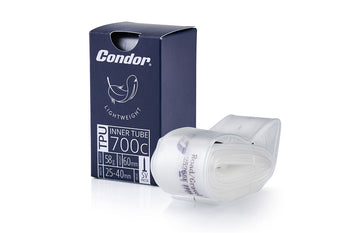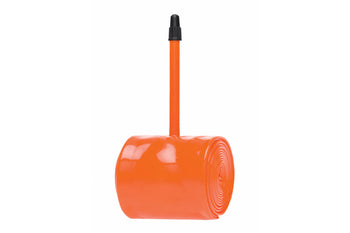Many bikes come with decent stock wheels — but not great ones. Upgrading your wheels is one of the easiest ways to make your bike lighter, faster, and smoother on the road.
Aluminium stock factory wheels usually tip the scales at 2kg because the aluminium rim is combined with steel butted spokes and hubs that are made from materials that cannot be precision machined to remove weight.
The choice of wheels available on the market can be a little overwhelming. We've selected some popular wheels with key features and top reviews from the industry.
Lighter = faster
Wheels have rotational mass, meaning weight at the rim resists changes in speed more than frame weight. Lighter wheels require less effort to accelerate, slow down, or climb hills, making the bike feel quicker and more responsive.
Lower inertia: With less mass spinning, the wheels react faster to your pedalling and changes in terrain. This gives a smoother, more controlled ride, especially over bumps or tight turns.
Premium materials: Lighter wheels use bladed or double-butted spokes to help cut down on material. In the hubs you'll find sealed bearings and the aluminium used is CNC machined. Higher quality aluminium can be made thinner and by mixing in other alloys retain strength.

More aerodynamic = faster
Switching from alloy to carbon wheels is one of the pricier bike upgrades, but still much cheaper than a new bike. Carbon fibre wheels offer two main benefits: increased aerodynamics (if you choose a deep-section wheel) and weight saving. Carbon deep-section wheels are faster because their smooth, airfoil-shaped rims handle airflow more efficiently, producing less turbulent drag than shallow-section wheels. This aerodynamic design directs air cleanly around the wheel, reducing resistance and enabling the rider to sustain speed with less effort.
Carbon fibre is often chosen rather than making a deep section rim for lightweight alloy because, no matter how much you machine aluminium, carbon fibre will be made lighter.

Carbon wheels are inherently smoother
Carbon fibre naturally absorbs vibrations from the road better than metals like aluminium. This means small bumps and rough surfaces are filtered out before they reach your hands and body, giving a smoother ride. Carbon wheels can be engineered to be stiff in certain directions (for power transfer) and more flexible in others (for comfort). This targeted stiffness reduces energy loss while still softening the ride.



Pair wide tyres with the right rims for smoother ride
Wider tyres naturally offer more comfort — and in recent years, sizes of 28mm and 30mm have become the new standard for road bikes.
However, tyre width needs to work in harmony with rim width. When a wide tyre is fitted to a narrow rim, it forms a more balloon-like shape as it is being squeezed at the edge. This also means it needs higher pressure for the tyre to hold its shape, resulting in a firmer, less comfortable ride.
A wider rim, on the other hand, creates a squarer tyre profile. This shape allows you to run a lower pressure for improved comfort, grip and control, without sacrificing performance.
From a speed perspective, a balloon-shaped tyre also has more surface contact with the road, which increases rolling resistance and aerodynamic drag.
The general rule of thumb for the sweet spot of performance, comfort, and handling:
17mm internal rim width works best with 23–25mm tyres
19mm internal rim width is ideal for 28–30mm tyres
21mm internal rim width is ideal for 30–34mm tyres
23mm internal rim width is ideal for 34mm+ tyres

Fulcrum Soniq ALX C23 Disc Wheelset
Weight: 1,785g
Fulcrum use a 2:1 spoke pattern with straight‐pull/aero spokes to provide stiffness whilst cutting down on materials.
"With a ride feel of a more expensive wheelset. Now compatible with up to 69mm wide tyres"
⭐⭐⭐⭐ - Bike Radar

Campagnolo Zonda GT
Weight: 1,690g
The rim has a 23 mm internal width which accommodates a wide tyre range: from road tyres to wider gravel tyres. Compatible with both Shimano & Campagnolo groupsets.
"Quality construction; impressive hubs; lively ride"
⭐⭐⭐⭐ - Bike Radar

Mavic Ksyrium SL
Weight: 1, 575g
Mavic uses its featherweight ISM4D rims with a 19mm internal width, patented aero spokes, and sealed Infinity hubs to create a wheelset with a legendary name and performance to match. One of the lighter aluminium wheelsets.

Mavic Cosmic SL 45 Disc Wheelset
Weight: 1,575g
Offering a balance between aerodynamics, weight, and versatility, the wheels feature a 23mm internal width and 45mm deep carbon rim to help you slice through the air.

Campagnolo Shamal Carbon C21 Disc Wheelset
Weight: 1,585g
The 21mm internal rim width will work with road tyres or chunkier sizes up to 50mm. The carbon fibre is shaped to be 40mm deep for aero gains in all conditions.
"Smooth, fast and versatile, these are one of the best new wheelsets around."
⭐⭐⭐⭐⭐ - Bike Radar

Campagnolo Levante Wheelset
Weight: 1,465g
An aero gravel upgrade. Carbon fibre, etched details, cup and cone bearings with spokeless nipples all save weight and make servicing the lightweight wheels easy. The minimum tyre width is 38mm.
⭐⭐⭐⭐⭐ - Cyclist Magazine top wheels of 2025


More wheel specific upgrades
Upgrade Your Tyres
Stock tyres on off-the-shelf bikes are often underwhelming, as manufacturers cut costs in this area. Cheaper tyres typically use harder, less grippy rubber or simpler constructions with lower puncture resistance. Upgrading to high-quality tyres can dramatically improve your bike’s speed, comfort and handling, and help you save up to 250g.
Get more puncture protection
Cheaper tyres will usually deploy cost-saving measures such as using harder, less grippy rubber with inferior puncture resistance. In cooler months where there is more debris around, upgrading to a tyre with additional sidewall protection will mean you'll spend less time at the side of the road fixing punctures.
Higher TPI = better performance
TPI stands for Threads Per Inch and is a measure of how many threads of fabric are woven into the casing of a bicycle tyre per inch. Tyres are made of layers of woven fabric, usually nylon, Kevlar, or polyester, called the casing. A high TPI is 160–320 and it creates a more supple and flexible casing, which equates to a smoother ride, better grip and lower rolling resistance.
Lighter
We're back to the science of inertia. The lower the inertia, the easier it is to accelerate. Tyres with a higher TPI are usually 250–300g depending on the width and whether they have additional puncture resistant features. Entry level road tyres are typically 380–400g+ and may have a steel bead to help maintain shape.
Top rated tyres of 2025

Continental GP 5000 S Tubeless Tyres
£64.99
It's a fast, grippy and lightweight tubeless tyre. Good enough to win the Paris-Roubaix. Available in a winter tyre version.
⭐⭐⭐⭐⭐ - Bike Radar

Hutchinson Blackbird Racing Lab Tubeless Ready
£49.99
Impressive ride feel, excellent grip and low rolling resistance, all at a competitive price. Available in a wider tyre version.
⭐⭐⭐⭐⭐ - Bike Radar

Vittoria Corsa N.EXT G2.0 Tubeless Tyres
£49.99
Versatile; decent wear resistance; easy to install.
⭐⭐⭐⭐ - Cyclist Magazine

Vittoria Terreno Dry Gravel G2.0 Tubeless Tyre
from £29.99
The Terreno Dry performs well in all but the worst of conditions and holds speed.
⭐⭐⭐⭐ - Bike Radar

Panaracer GravelKing X1 TLR
£54.99
An impressive balance of speed, suppleness and durability, best for dry days.
⭐⭐⭐⭐ - Cyclist Magazine

Hutchinson Touareg
£39.99
Works well on slightly less even, less dry surfaces
⭐⭐⭐⭐ - Best Fast Rolling Tyre, Cyclist Magazine


Save weight by upgrading your inner tubes
Inner tubes are available in lots of different materials. The most popular are TPU (thermoplastic polyurethane) inner tubes and standard butyl tubes. Most bicycles are fitted with butyl rubber inner tubes which weigh around 110–130g (depending on width).
Weight
TPU are significantly lighter than standard butyl tubes — often 30–50% lighter — and reduce your rotational weight, making acceleration and climbing feel easier. TPU is more flexible and supple, allowing the tyre to conform better to road irregularities and reduce rolling resistance, too.
What about punctures?
Early versions of TPU tubes were thinner and inherently likely to puncture more than a thick rubber tube. However, advancement in the formulation of TPU tubes has made them equal with most butyl tubes.
Bonus feature: TPU tubes hold air very well, sometimes even better than butyl, so you don’t lose pressure quickly, unlike latex tubes.
Shop Lightweight TPU inner tubes

QUICK ADD
Condor TPU Lightweight Inner Tube

QUICK ADD
Vittoria Ultra Light Speed TPU Inner Tube







